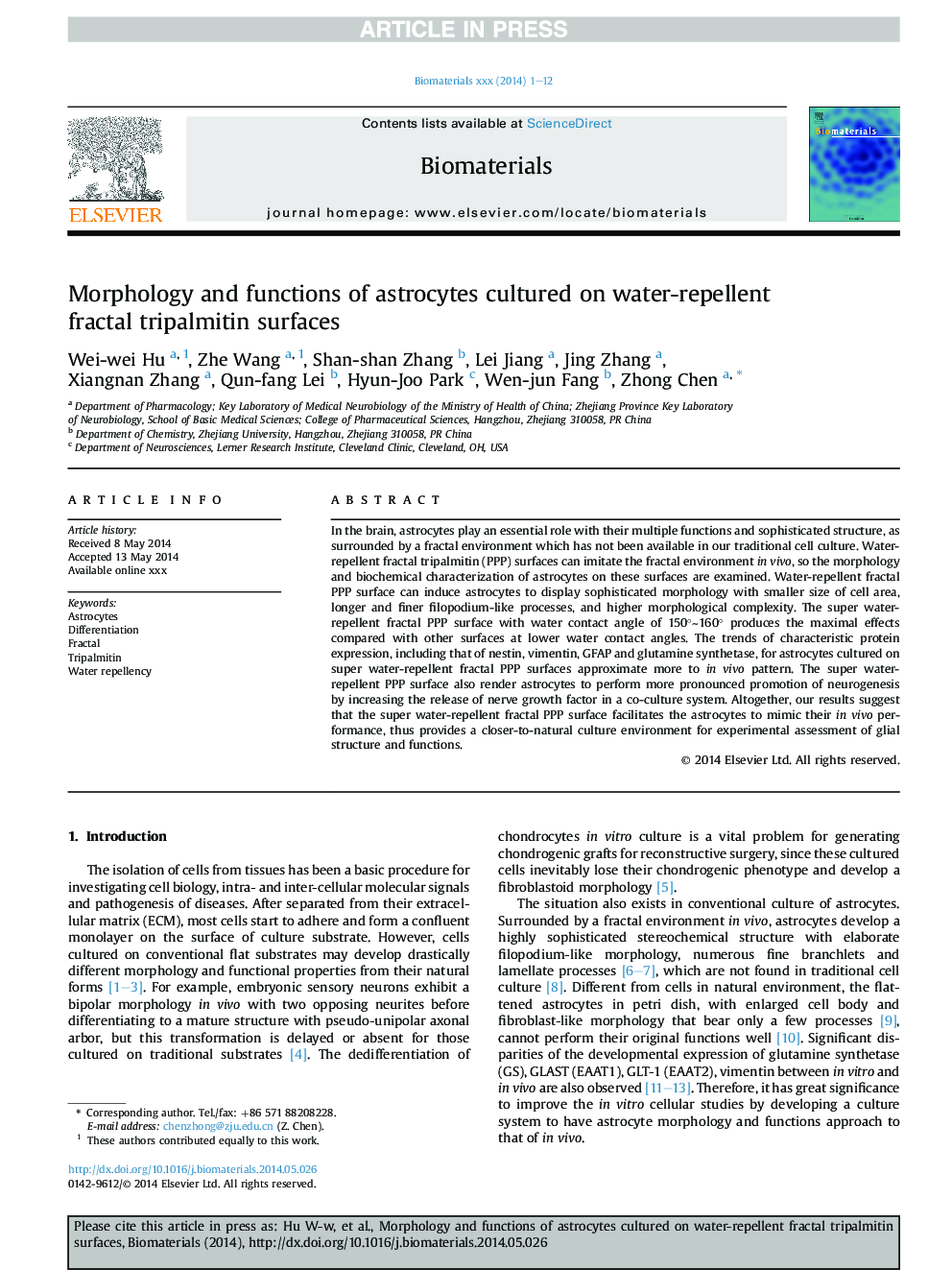| Article ID | Journal | Published Year | Pages | File Type |
|---|---|---|---|---|
| 10227212 | Biomaterials | 2014 | 12 Pages |
Abstract
In the brain, astrocytes play an essential role with their multiple functions and sophisticated structure, as surrounded by a fractal environment which has not been available in our traditional cell culture. Water-repellent fractal tripalmitin (PPP) surfaces can imitate the fractal environment in vivo, so the morphology and biochemical characterization of astrocytes on these surfaces are examined. Water-repellent fractal PPP surface can induce astrocytes to display sophisticated morphology with smaller size of cell area, longer and finer filopodium-like processes, and higher morphological complexity. The super water-repellent fractal PPP surface with water contact angle of 150°â¼160° produces the maximal effects compared with other surfaces at lower water contact angles. The trends of characteristic protein expression, including that of nestin, vimentin, GFAP and glutamine synthetase, for astrocytes cultured on super water-repellent fractal PPP surfaces approximate more to in vivo pattern. The super water-repellent PPP surface also render astrocytes to perform more pronounced promotion of neurogenesis by increasing the release of nerve growth factor in a co-culture system. Altogether, our results suggest that the super water-repellent fractal PPP surface facilitates the astrocytes to mimic their in vivo performance, thus provides a closer-to-natural culture environment for experimental assessment of glial structure and functions.
Related Topics
Physical Sciences and Engineering
Chemical Engineering
Bioengineering
Authors
Wei-wei Hu, Zhe Wang, Shan-shan Zhang, Lei Jiang, Jing Zhang, Xiangnan Zhang, Qun-fang Lei, Hyun-Joo Park, Wen-jun Fang, Zhong Chen,
